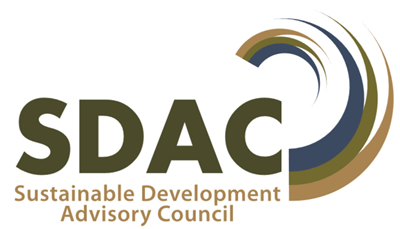
Main focal areas in 2013 and 2014
During the 2013/14 financial year, the Sustainable Development Advisory Council concentrated largely on establishing its administrative and operational arrangements and procedures. There were also considerable discussions to clarify the mandate of the Council, to identify priority actions and intervention areas, as well as modalities for providing effective advisory services.
The main areas in which the Council concentrated its activity in 2013/14 are summarised here. More information is available in the Annual Report of the Sustainable Development Advisory Council Financial Year 2013/14.
-
Adoption of Guiding Principles of the Council
The Council adopted a number of principles to guide its mode of operations and interventions.
-
Development of Standard Operational Procedures Manual
A Standard Operational Procedures Manual was developed as a founding document to guide the operations of the SD Advisory Council.
-
Compilation of Inventory of Files relevant to Sustainable Development
The Secretariat compiled an inventory of national legislative instruments, policies, strategies, reports and
studies, to serve as reference materials for each Council member
-
Briefing on Critical Environmental Issues and Challenges
A comprehensive presentation was provided to the Council members on the critical environmental issues facing Namibia with particular focus on challenges and possible entry points and areas for the SDAC.
-
Providing Effective Advisory Services through Technical Sessions
The Council identified the areas of tourism, the Community-Based Natural Resources Management (CBNRM) programme and environmental funding mechanisms as integrated areas in which it could provide strategic advice to the Minister of Environment and Tourism.
Future Priorities of the Council
With its operational and administrative procedures in place, the key future priorities for the Council are to position itself on critical issues and to make an impact by providing effective advisory services to the Minister of Environment and Tourism.
-
Enhancing Visibility of the Council
As with any new institution, efforts and resources need to be put towards raising public awareness to build trust and for better public acceptability of the ultimate results achieved through the Council. This will be done through promoting, communicating and informing the public about the existence and mandate of the Council.
-
Identification of Council Intervention Areas
Based on the comprehensive briefing on environmental issues facing Namibia, the Council members identified a number of critical intervention areas where it could make the greatest impact and add value to existing good practices and initiatives. The Council is not limiting itself to specific intervention areas, but has identified five initial areas as priorities for action:
- Sustainable energy with a view to enhancing Namibia’s energy access and security
- Regular production of the Integrated State of Environment Report (ISOER)
- Environmentally sustainable urban expansion
- Water resources management
- Drought and flood preparedness